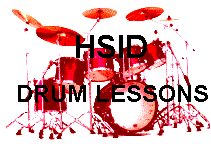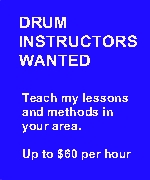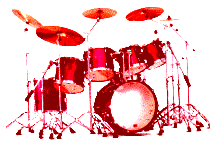 

Lesson Menu #2
Intermediate & Advanced.
Lesson Menu #3
Advanced & Ultra-Advanced.
Lesson Menu #4
Text lessons: All levels.

PRODUCTS:

GET ALL THE PRODUCTS AT ONE LOW PRICE.

SURPRISES ABOUND . . . For those with a bit of generosity
in their soul.
CLICK HERE , to see what I mean.

Intermediate & Advanced
Drummers
 Your future is waiting.
Your future is waiting.

ALL MUSICIANS
MASTER
ALL RHYTHM,
This FASCINATING WAY!
 Discover the 'LOST KEY' for Unraveling
ALL the mysteries of rhythm, and musical time.
Discover the 'LOST KEY' for Unraveling
ALL the mysteries of rhythm, and musical time.
This work
is the crowning-achievement of my 50 year career, and it's
my proudest accomplishment.
It contains the potential to help YOU change the face of modern music!
You'll love it! CLICK HERE to check it
out completely! You're in for a MAJOR surprise!
 "PRE-SCHOOL DRUMMER?
"PRE-SCHOOL DRUMMER?
YES!"
Can we teach rhythm
to pre-schoolers? YES!

This is a very short course,
designed to help adults plant the seeds of rhythm
into children of nearly any age.
CLICK HERE
 FREE ELECTRONIC BOOK BONUS (also included)
FREE ELECTRONIC BOOK BONUS (also included)
 BUSINESS OPPORTUNITY:
BUSINESS OPPORTUNITY:
MAKE BIG MONEY SELLING USED DRUMSETS!
* INSIDER HARDBALL-BUYING-TIPS AND SECRETS.
* UNIQUE RECOVERING SECRETS

Support this site and and gain an advetising bargain with the deal.
 Place a permanent ad here. Place a permanent ad here.

GET ALL THE PRODUCTS AT ONE LOW PRICE.

SURPRISES ABOUND . . . For those with a bit of generosity
in their soul.
CLICK HERE , to see what I mean.

|
|
Downloads *
Drummers Trivia *
Drummers Chat Rooms *
Rudiments *
Digital Music *
Knowledge Assessments *
TD Archives *
Drum Set Buyers Guide *
Bass-Player Jokes *
Assembling a Drum Set *
Parts of a Drum Set *
About HSID *
Video Troubleshooter
Bill Powelson's School of Drums
School of Drums
RIMSHOTS . . .
There are three primary types of rimshots. Each type tends
to have its own use. Rimshots are very popular in many music
styles and you will be needing at least the first two of these three
types, sooner than you think . . .
RIMSHOT #1: The lay-over rimshot
The LAY-OVER rimshot is popular in many styles of music from pop
to Country & Western music. This type of rimshot is also widely and
commonly used in Latin music styles as well.
HOW TO PLAY A 'LAY-OVER RIMSHOT':
To execute a lay-over rimshot, the butt of the stick is
laid-over, (across) the rim of the drum (usually the snare.)
The trick, or objective is to produce a popping, wood-block
sound. There is a bit of an art to doing this . . .
Grab the stick in your left-hand with just the tips of your
thumb and first finger. No other fingers should touch the stick.
Grab the sick so that the butt will lay across the rim of the snare
at about the 2:00 o'clock position. The point of the stick will be
somewhere near the center of the drum. You want to lay the stick
across the rim of the drum in such a way that it creates a popping,
wood-block sound. You will feel the stick under the palm of your
hand as you connect with the rim. The point of the stick will be
making contact at about the center of the head . . . under your palm.
This means you can't allow your fingers to wrap under the stick as
you lay it into the rim. If the fingers are wrapped underneath . . . it
will blunt the effect. The stick won't make good contact with both
the rim and the head simultaneously.
Place your thumb and first finger on the sides of the stick as you
lay it into the rim. Search for tone! Perfect tone will depend on how
much of the stick is protruding over the edge of the drum (rim.) Move
the stick slightly one way, then the other (forward or back) and
experiment until you find that perfect, crisp, hollow, wood-block sound.
Many beats (especially the Latin beats) require that we often switch
quickly from a lay-over rimshot to a solid blow with the butt of the stick
to either the snare or possibly the small mounted tom above. It is
important to develop speed with this. For example, be able to play a
quick rimshot on the snare, then move up to the tom and connect a
couple of hits using the butt of the stick and then return to the snare
for another lay-over rimshot. Practice this repetitiously until it feels
natural and easy to do. You will need it in many of the (Latin) beats
to come.
RIMSHOT #2: The POWER Rimshot
This rimshot technique may save your job someday! It is
relatively simple to execute but many drummers may not
be aware of the value.
This one is called the 'Power Rimshot' and it will give you
immense power once you are aware of 'when', 'where' and 'how'
to use it.
The 'Power Rimshot' may be played (usually on the snare) with
either the right or left hand. The best use of this rimshot technique is
for adding dynamics and power to the backbeats of songs that call
for more feeling.
HOW TO PLAY THE 'POWER RIMSHOT':
It is simple! Just play a beat going . . . (any beat) preferably
8th rock . . .
As you connect with the backbeat . . . shift your stick to a
position where the point of the stick connects in the center of the
drum at exactly the same instant the shaft of the stick connects with
the rim. There is a certain 'feel' to doing this and it will allow you to
pull new and different tones from your snare drum. More than that it says,
'FOLLOW ME"! Don't argue with this tempo"!
Both areas of the stick must connect simultaneously.
When it is done correctly a pinging sound will arise from the drum along
with the normal snare tone. Your volume level will increase by a factor
of 3.
In many situations this technique may be too much . . . too loud
and too strong for the environment. At other times . . . you may be called
'wimpy' if you DON'T use it and we ALL know that 'wimpy' drummers don't
last long! I would much rather be criticized as too loud rather than
called wimpy. Let me explain . . .
Situations arise onstage where the decibels are deafening.
The amplification of electrified instruments and P.A. equipment
surrounding the drummer may often drown out the drums completely.
Sometimes the other instruments may be so loud that the drums often
get completely covered and over-powered.
The next thing to happen may be chaos as the other players take
the tempo away from the drummer. Sometimes the loudest
instrument in the band may run away with the tempo and all the other
players will follow that instrument because they can't hear the snare
backbeat well enough.
The song self-destructs and inevitably everyone in the band will
blame the drummer . . . (and not the dorky guitarist who ran off with
the tempo in the first place! ) At that point . . . the drummer
gets tagged with that dreaded 'El Wimpo' label. It's a fate worse
than death itself!
A wise drummer will save his/her own tush by not allowing
the situation to develop in the first place. This situation occurs
most often because the offending instrument may be at a distant corner
of the stage and that player either can't hear the backbeat or is refusing
to follow it. By driving home that backbeat with a 'Power Rimshot', the
drummer can regain control of the tempo and the band. This technique
can weld and tighten a band like no other trick I have learned in 40 years
of playing. It works! Try it anytime your situation calls for it!
Never, ever let your band accuse you of playing too wimpy!
Dynamic? Yes, that's a cool label!
Wimpy? NO!
THE 'CROSS-STICK RIMSHOT':
This one has nothing at all to do with hitting the rim
of the drum but it produces a rimshot sound.
You won't see this one used a lot in today's music
but it is extremely useful when used in solos and uniquely
different fills.
HOW TO PLAY A 'CROSS-STICK RIMSHOT':
As the name implies, the cross-stick rimshot is executed
by smacking one stick with the other. Usually we place the
point of our left stick in the center of the snare. It will be at an
angle to the head, somewhat perpendicular . . . maybe 75* degrees.
Then, with the right stick . . . we smack the left stick somewhere in the
middle. This will produce a cracking sound that might really jazz up
your solos and fills once you learn to execute it quickly. It is quite
effective when mixed with rudimental techniques such as the Single
Drag or the Ratamaque. Usually a drummer will play the rudiment
quite fast and finish it off with the cracking sound of a cross-stick
rimshot on the very last note of the rudiment.
Old timers like Buddy Rich and Gene Krupa made great use
of this rimshot technique but it is rarely seen these days.
................................................................

Copyright Bill Powelson 1996 all rights reserved.
| |



